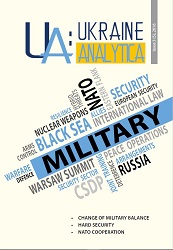Dynamics of Russian Conventional Deterrence: Theoretical Foundations for Practical Strategy
Dynamics of Russian Conventional Deterrence: Theoretical Foundations for Practical Strategy
Author(s): Sergey MinasyanSubject(s): Military history, International relations/trade, Security and defense, Military policy, Geopolitics, Peace and Conflict Studies, Russian Aggression against Ukraine
Published by: PIC Promotion of the Intercultural Cooperation
Keywords: Russian Conventional Deterrence; Theoretical Foundations; Practical Strategy;
Summary/Abstract: This paper analyses the evolution of post-Soviet Russian conceptual and doctrinal visions of conventional deterrence and its current status, prospects and impact on regional and global levels in the framework of Russian strategic military and political thinking. The paper argues that although neglected since the early post-Soviet period, Russian conventional (nonnuclear) deterrence has been revisited especially since 2014 when Russia’s Military Doctrine gave it a new definition, soon applied in practice during the Syrian campaign. In its military strategy, conventional deterrence changed its standing over the last two decades from a subsidiary tactical/sub-strategic level warfighting tool to a separate military-political factor and a self-contained component of Russian strategic deterrence. Against the backdrop of Ukrainian crisis, Syrian conflict and rising tension between Russia and NATO, Russian conventional deterrence fulfills the function of a regional and global military-political factor, while its application in warfighting is now happening on a new, more effective technological level based on new types of long-range precision-guided munitions (PGM).
Journal: Ukraine Analytica
- Issue Year: 2/2016
- Issue No: 03 (5)
- Page Range: 29-35
- Page Count: 7
- Language: English

